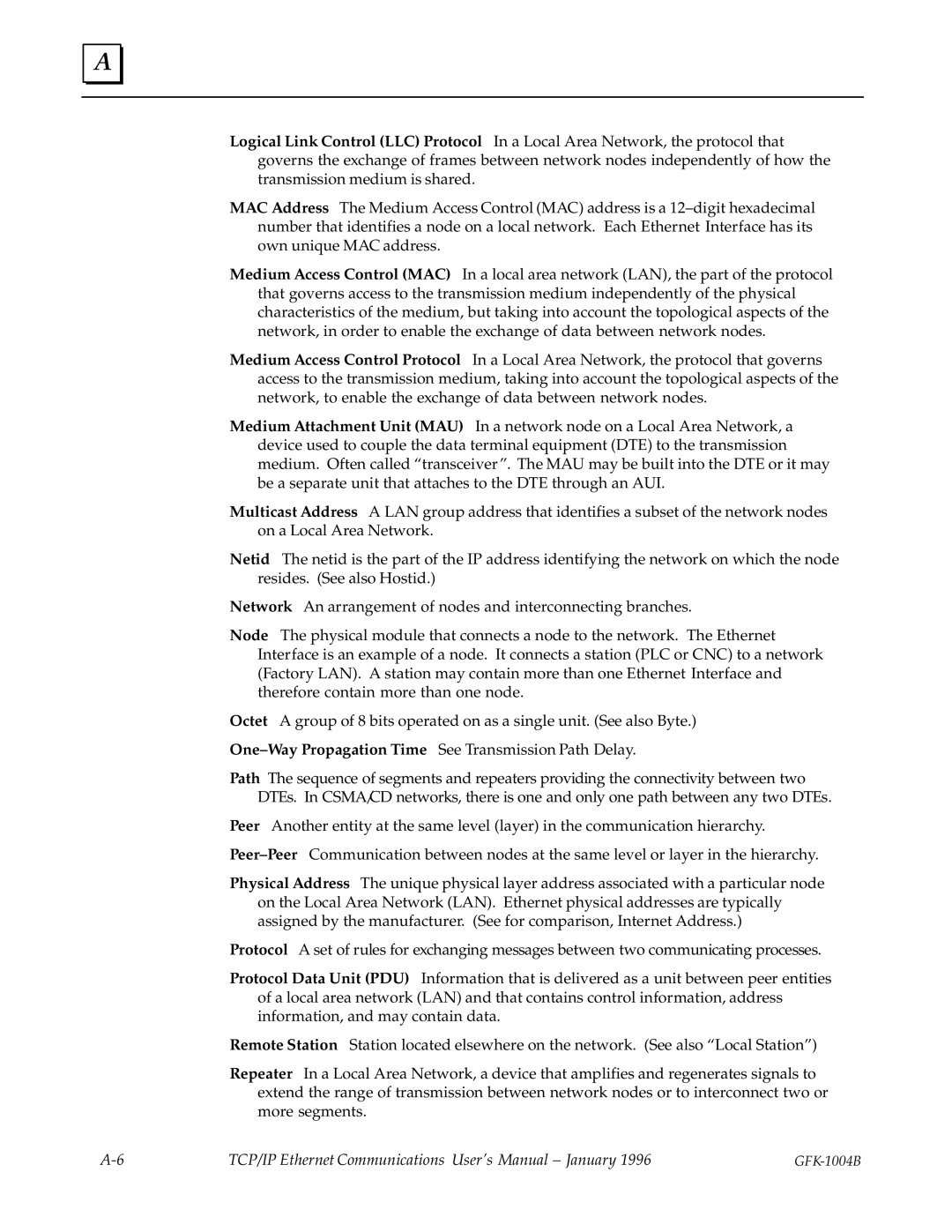A |
Logical Link Control (LLC) Protocol In a Local Area Network, the protocol that governs the exchange of frames between network nodes independently of how the transmission medium is shared.
MAC Address The Medium Access Control (MAC) address is a 12±digit hexadecimal number that identifies a node on a local network. Each Ethernet Interface has its own unique MAC address.
Medium Access Control (MAC) In a local area network (LAN), the part of the protocol that governs access to the transmission medium independently of the physical characteristics of the medium, but taking into account the topological aspects of the network, in order to enable the exchange of data between network nodes.
Medium Access Control Protocol In a Local Area Network, the protocol that governs access to the transmission medium, taking into account the topological aspects of the network, to enable the exchange of data between network nodes.
Medium Attachment Unit (MAU) In a network node on a Local Area Network, a device used to couple the data terminal equipment (DTE) to the transmission medium. Often called ªtransceiverº. The MAU may be built into the DTE or it may be a separate unit that attaches to the DTE through an AUI.
Multicast Address A LAN group address that identifies a subset of the network nodes on a Local Area Network.
Netid The netid is the part of the IP address identifying the network on which the node resides. (See also Hostid.)
Network An arrangement of nodes and interconnecting branches.
Node The physical module that connects a node to the network. The Ethernet Interface is an example of a node. It connects a station (PLC or CNC) to a network (Factory LAN). A station may contain more than one Ethernet Interface and therefore contain more than one node.
Octet A group of 8 bits operated on as a single unit. (See also Byte.)
One±Way Propagation Time See Transmission Path Delay.
Path The sequence of segments and repeaters providing the connectivity between two DTEs. In CSMA/CD networks, there is one and only one path between any two DTEs.
Peer Another entity at the same level (layer) in the communication hierarchy.
Peer±Peer Communication between nodes at the same level or layer in the hierarchy.
Physical Address The unique physical layer address associated with a particular node on the Local Area Network (LAN). Ethernet physical addresses are typically assigned by the manufacturer. (See for comparison, Internet Address.)
Protocol A set of rules for exchanging messages between two communicating processes.
Protocol Data Unit (PDU) Information that is delivered as a unit between peer entities of a local area network (LAN) and that contains control information, address information, and may contain data.
Remote Station Station located elsewhere on the network. (See also ªLocal Stationº)
Repeater In a Local Area Network, a device that amplifies and regenerates signals to extend the range of transmission between network nodes or to interconnect two or more segments.
TCP/IP Ethernet Communications User's Manual ± January 1996 |
|
